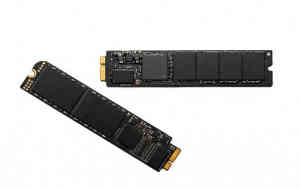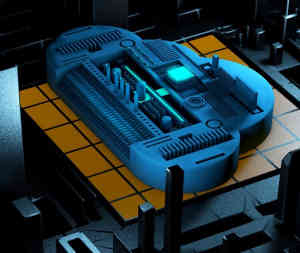In today’s world of digital disruption, where consumers are king, and real-time response is a key to any organization’s success, the need to innovate and modernize technologies that power data centers is massive. As the pace of business increases, companies feel the pressure to deliver innovative, secure and cost-effective IT solutions that meet ever-evolving business requirements.
Data centers are proliferating to meet the persistent demand for IT capacity. Last year was eventful for the data center industry, and 2018 is expected to bring just as many exciting developments that can increase both efficiency and competitiveness for all the data center providers involved.
Here are some of the emerging data center trends in 2018 that are expected to point the industry in new directions
1. Meet the all new intelligent edge data centers
 Edge computing is gaining immense popularity along with Internet of things (IoT), with industry leaders predicting that they will grow in tandem. Edge computing is identified as an alternative to cloud computing that facilitates data processing at or closer to the source of data generation. With this technology, data center managers can run data processing at the edge of a network instead of storing it in a cloud or a central data warehouse.
Edge computing is gaining immense popularity along with Internet of things (IoT), with industry leaders predicting that they will grow in tandem. Edge computing is identified as an alternative to cloud computing that facilitates data processing at or closer to the source of data generation. With this technology, data center managers can run data processing at the edge of a network instead of storing it in a cloud or a central data warehouse.
From reducing bandwidth and costs to survivability, the benefits of moving to edge data centers are extensive. With micro and edge computing, the communication delay is shortened from several hundred milliseconds to a few milliseconds. Further, the technology offloads computation-intensive processing on the user’s device to edge servers and makes processing less dependent on the device’s capability.
2. 2018 is the year of hyper-converged technologies
 Converged infrastructure, particularly hyper-converged infrastructure, has been a headline-making trend in data center technology, as enterprises look to streamline IT operations. Hyperconverged technology that brings together vital IT components in one system, which is managed through a software layer, is taking on a larger role within data center infrastructure. These integrated systems promise speedier deployment and simplified management.
Converged infrastructure, particularly hyper-converged infrastructure, has been a headline-making trend in data center technology, as enterprises look to streamline IT operations. Hyperconverged technology that brings together vital IT components in one system, which is managed through a software layer, is taking on a larger role within data center infrastructure. These integrated systems promise speedier deployment and simplified management.
Hyperconvergence combines computing, storage, and networking into a single system to decrease data center complexity and increase scalability. Hyperconverged platforms include software-driven storage, and virtualized networking, and they run on standard, off-the-shelf servers. A converged data center aims to cut-down the manual labor and technical skills that are required to operate an on-premises or colocated data center.
3. Saving power, space, and cooling, all in a Flash
 All-flash storage has truly become commonplace in the data center and is now in reach for all companies, with both legacy vendors and new industry players offering the disruptive technology. According to recent research, more than 50 percent of data centers will use Serial Storage Architecture (SSA) for big data workloads and high-performance computing, up from less than 10 percent today. All-flash solutions are enterprise-ready and are now considered in-line with disk-based solutions when designing, updating or renovating a data center.
All-flash storage has truly become commonplace in the data center and is now in reach for all companies, with both legacy vendors and new industry players offering the disruptive technology. According to recent research, more than 50 percent of data centers will use Serial Storage Architecture (SSA) for big data workloads and high-performance computing, up from less than 10 percent today. All-flash solutions are enterprise-ready and are now considered in-line with disk-based solutions when designing, updating or renovating a data center.
The all-flash solution delivers sufficient low latency to remove I/O bottlenecks in the data center and consequently raise the overall efficiency of application servers and other computer resources. The reliability and stability around all-flash arrays have made them a popular replacement for legacy spinning disk solutions.
4. New tricks for existing data centers with hybrid cloud
 Cloud computing has now become the norm for enterprises to support the fast-changing business environment. While many cloud options exist, hybrid cloud is the most preferred model in today’s business world. Data centers are at the core of cloud computing technology and deploying a hybrid model can offer the most benefits for all enterprises by connecting off and on-premise resource.
Cloud computing has now become the norm for enterprises to support the fast-changing business environment. While many cloud options exist, hybrid cloud is the most preferred model in today’s business world. Data centers are at the core of cloud computing technology and deploying a hybrid model can offer the most benefits for all enterprises by connecting off and on-premise resource.
By leveraging this model, organizations can achieve resiliency and flexibility in many operations, such as managing critical workloads and applications, disaster recovery and business continuity. The hybrid strategy enables enterprises to use the cloud as an extension of its existing data center while reducing risks and controlling costs.
5. Application Program Interfaces (APIs) fast-track digital transformation
 The digital transformation platform is allowing the rapid formation of cutting-edge digital products, services, and experience. Moreover, API management is central to accelerating this massive shift. An API-enabled digital platform helps in speeding up the integration and development of digital services and allows more smart tools for IT automation and adaptation. Further, it promotes breakthroughs and faster time-to-market for novel services. From the manual configuration of software and hardware to more automated and scalable techniques, API is driving the evolution of data center management.
The digital transformation platform is allowing the rapid formation of cutting-edge digital products, services, and experience. Moreover, API management is central to accelerating this massive shift. An API-enabled digital platform helps in speeding up the integration and development of digital services and allows more smart tools for IT automation and adaptation. Further, it promotes breakthroughs and faster time-to-market for novel services. From the manual configuration of software and hardware to more automated and scalable techniques, API is driving the evolution of data center management.
These systems provide state monitoring programmability and configuration. Programmability brings scale to administrative tasks and the capability to quickly respond to changes in the environment. With the integration of APIs, enterprises can collaborate within their landscape made up of service providers, business partners, and interconnected customers.
6. Artificial intelligence: self-managing data centers
 Although artificial intelligence (AI) has existed for over six decades, it is just now going mainstream. This is mainly due to the advent of big data, deep learning algorithms, and AI-focused processors. These factors have enabled AI to power innovations like smart factories, cars, and homes, which have widespread appeal. Today, AI has arrived in data centers, holding tremendous promise for self-manage data centers.
Although artificial intelligence (AI) has existed for over six decades, it is just now going mainstream. This is mainly due to the advent of big data, deep learning algorithms, and AI-focused processors. These factors have enabled AI to power innovations like smart factories, cars, and homes, which have widespread appeal. Today, AI has arrived in data centers, holding tremendous promise for self-manage data centers.
The technology is being used in conjunction with data center infrastructure management (DCIM) to analyze power, capacity planning, and cooling as well as the overall health of critical backend systems. For instance, Google acquired DeepMind, an AI startup, and began using the technology to reduce costs and improve efficiencies in its data centers.



